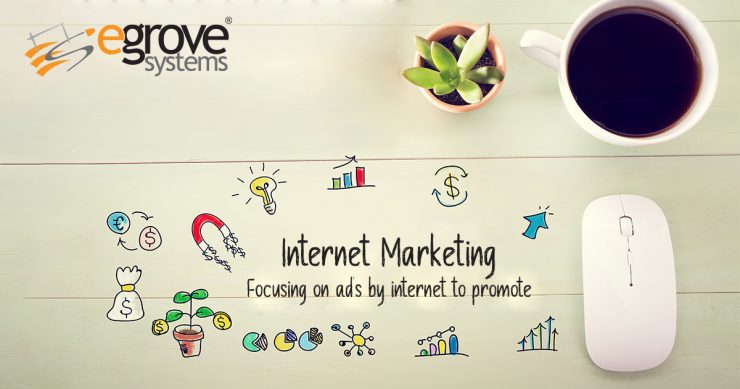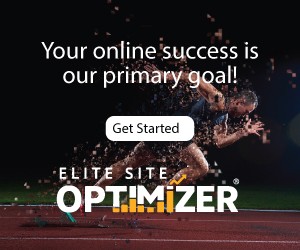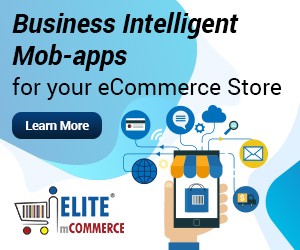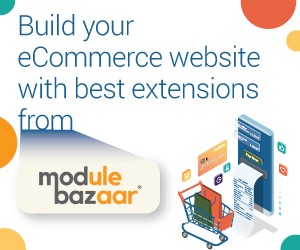Long gone are the days when people’s marketing efforts were limited to TV and radio ads, newspaper advertising, billboards, etc. With the proliferation of web technologies in the 1990s, internet marketing emerged as a lucrative and accessible alternative to traditional methods of business promotions. In simple words, internet marketing, also known as digital marketing or web marketing, is an umbrella term for all the ‘marketing’ that takes place online. It encompasses an array of strategies, such as emails, social media posts, paid advertisements or PPC, SEO, and so forth.
A recent survey shows that 75 percent of marketers firmly believe that internet advertising campaigns have increased their company’s target revenue. When done right, internet marketing can enable small and medium-sized enterprises to compete against the bigwig. Even with a limited budget, businesses can put on their ‘creative hats,’ and reach the target clientele at each buying cycle stage. Thus, in today’s day and age, for any business to stay afloat and ahead, internet marketing is inviolable.
Paid Ads are a Foolproof Way to Deliver Results
Internet marketing, as we had already hinted, is an all-inclusive term for various means of promotions that happens digitally. However, in this article, the focus will be on paid ads or PPC. In a layperson’s language, paid advertisement can be defined as an internet-marketing model where businesses bid to display ads to internet users. The enterprise willing to pay the most has its advertisement shown, and they pay for each click on the advertisement. This model of billing is known as Pay per Click.
Read also: How Small eCommerce Stores Can Provide Fast, Cost-Effective Delivery
On the other hand, the second billing method for a paid ad is CPM (Cost per 1000 Views), wherein the advertiser is billed per one thousand ad impressions on a web page. Examples of paid ads include Pay-Per-Click, Programmatic advertising, Google Ads, Facebook remarketing, LinkedIn Ads, etc. Surveys reveal that PPC traffic converts 50 percent better than organic site visitors, and 65 percent of all high-intent searches culminate in an ad click. Thus, it is quite clear that paid advertisements are the greatest channel in the internet marketing arsenal. Now that we know the basics of paid ads as a digital marketing tool, it is time to gauge some of their benefits.
- Paid Ads are a Foolproof Way to Deliver Results
It might be a hard pill to swallow; organic reach on social media is down, and paid advertisements are the only way to see results. On social media platforms like Facebook and Instagram, organic reach refers to the number of people who have seen through content authentically without monetary intervention. However, organic reach on social media has taken the plunge, and sites like Instagram and Facebook have transitioned into a pay-to-play model for brands and businesses. For instance, an investigation illustrates that the average organic reach of a post on Facebook is 2.2 percent, which is abysmally low. Thus, it means that one in every 19 followers sees your FB post. To escape such a rut, paid Facebook ads to come to the rescue. When you combine creativity and consistency with a well-planned paid ad campaign, the results will blow your mind.
2. Paid Ads Are an Affordable Form of Internet Marketing
One of the biggest benefits of paid ads is that they are both affordable and value for money. They reach a highly targeted audience; thus, ROI is generally quite favorable. For example, USD 8 for every USD 1.60 spent is what businesses earn on average with Google Ads. In addition, ads can be created in mere minutes, and a plethora of tools can help create the desired aesthetics at little to no cost.
For instance, Google Responsive Ads automatically adjust size, appearance, and format to fit any available space on the Google Display Network. Then, Google only applies Machine learning (ML) to serve the advertisements that perform the best for you. Furthermore, as ads are measurable, it becomes easy to keep track of your progress and see where there is room for improvement. Thus, various dimensions of paid ads are designed to help you get a bang for the buck.
3. Paid Ads Help with Retargeting and Retention
Last but not least, paid ads can also help retarget a campaign. Once a visitor has viewed your profile or website via a paid advertisement and is engaged with your business, you can retarget them. Retargeted ads show highly relevant promotions for continuous engagement from the right prospects who have displayed interest in your product or service.
The greatest benefit of retargeted ads is that they ensure that your brand is ingrained in the psyche of the potential customers, and they are constantly thinking of you in the back of their heads. Thus, the end outcome is a spike in ROI. In addition, you can also get a visitor to your website with a Google dAd, for instance, and then retarget them on Facebook or Instagram Ads. Thus, it is a win-win situation.
Wrapping It Up
So, there we have it, a crisp overview of the top three benefits of paid advertisements as an internet marketing strategy. With the right strategy, paid ads can reap much profit for your business.
















Add comment